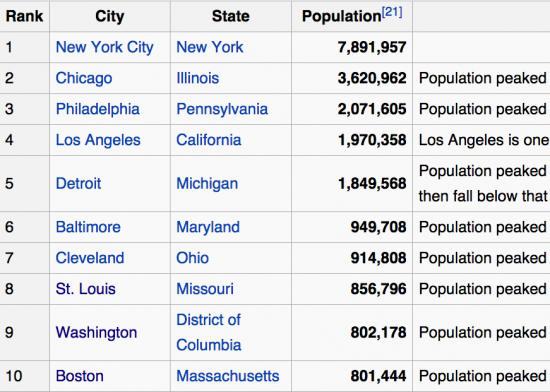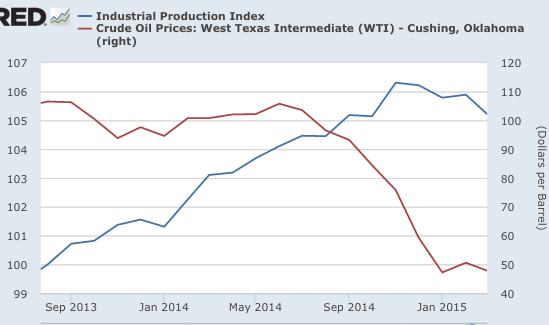How many more populist “victories” can we survive?
Here’s Salon on the Greece government’s “victory” last February:
One week after Greece’s leftist government reached a new debt deal with its creditors, Paul Krugman argues in his New York Times column today that left-wing criticism of the deal is misguided, obscuring larger victories secured by Greek negotiators.
Matt Yglesias, who just spent time in Argentina, writes about the lessons of that country’s recovery following its exit from the one-peso-one-dollar “convertibility law”. As he says, it’s a remarkable success story, one that arguably holds lessons for the euro zone.
I’d just add something else: press coverage of Argentina is another one of those examples of how conventional wisdom can apparently make it impossible to get basic facts right. We keep getting stories about Ireland’s recovery when there is, in fact, no recovery “” but there should be, darn it, because they’ve done the “right” thing, so that’s what we’ll report.
And conversely, articles about Argentina are almost always very negative in tone “” they’re irresponsible, they’re renationalizing some industries, they talk populist, so they must be going very badly.
In fairness, they did have a very strong cyclical rebound after easing monetary policy (an issue on which I agree with Krugman.) Where I disagree is his tendency to sort of wave away supply-side concerns—which are what matters in the long run. It looks like the long run has arrived, as the Argentine economy has sputtered over the three years since he wrote this post, and 2015 will be downright ugly.
From the same post, Krugman has good things to say about Brazil’s slightly more moderate, but still hopelessly statist policy regime:
Just to be clear, I think Brazil is going pretty well, and has had good leadership. But why exactly is Brazil an impressive “BRIC” while Argentina is always disparaged? Actually, we know why “” but it doesn’t speak well for the state of economics reporting.
Why was Argentina disparaged? Perhaps because some of us don’t have a “in the long run we are all dead” Keynesian obsession with the demand-side. We saw problems down the road. BTW, the Argentine president who created the disaster died in 2010, leaving his wife to inherit the mess “in the long run.” Brazil has also done very poorly in the three years since Krugman praised its (incompetent) leadership, and the forecasts reported in the next link call the outlook for Brazil’s economy in 2015 “grim.” Nor will boosting AD perform miracles, Brazil and Argentina already have lots of inflation.
Here’s the outlook for the key economies in Latin America next year:
Many Latin American economies will continue to face increasing growth divergence this year, which is neatly defined by the two oceans that envelop the region. The Atlantic-facing economies of Argentina, Brazil and Venezuela””the largest members of the Mercosur bloc””will contract 0.2%, 0.9%, 5.5%, respectively, according to LatinFocus Consensus Forecasts panelists. On the other side of the continent, Chile, Colombia, Mexico and Peru””which make up the Pacific Alliance””will expand 2.9%, 3.4%, 2.9% and 3.5%, respectively.
Let’s see, I’m trying to remember which side had the more statist policy regimes, the Atlantic or the Pacific bloc? The next paragraph answers the question:
This division has little to do with the western countries’ orientation toward a more dynamic Asia and the eastern countries’ exposure to the European economies, which are still weak. In fact, the growth divergence is mainly the result of the substantial differences in each country’s economic policy during a decade-long economic boom, which was fuelled by high commodities prices and strong inflows of foreign direct investment. Throughout the boom years, Atlantic countries spent more and saved less, while the Pacific-facing countries invested more. Moreover, many governments in the Atlantic-facing countries implemented more interventionist economic policies, which put a dent in businesses’ profits and discouraged investment. Conversely, countries bordering the Pacific undertook agendas of economic reforms, which investors welcomed.
But that doesn’t make any sense. How could the Pacific countries be doing better, when they relied more on the brain dead supply-side approach of the GOP? Of course Krugman told us that Chile’s supposed free market success is just “Fantasies of the Chicago Boys.”
But there’s another point: the economics of Chile under Pinochet are a lot more ambiguous than legend has it. The way the story is told now, the free-market guys moved in, liberalized, and then there was a boom.
Actually, as you can see from the chart above, what happened was this: Chile had a huge economic crisis in the early 70s, which was, yes, partly due to Allende and the accompanying turmoil. Then the country experienced a recovery driven in large part by massive capital inflows, which mostly consisted of making up the lost ground. Then there was a huge crisis again in the early 1980s “” part of the broader Latin debt crisis, but Chile was hit much worse than other major players. It wasn’t until the late 1980s, by which time the hard-line free-market policies had been considerably softened, that Chile finally moved definitively ahead of where it had been in the early 70s.
There’s no question the Chicago Boys screwed up in the early 1980s, by ignoring Milton Friedman’s (and Paul Krugman’s) advice to float your currency. But what about that supposed “softening” of free market policies? Here’s the Fraser Institute rankings of economic freedom in Chile (index number out of 10, and then global ranking), since the Chicago-style reforms began in 1975:
1975: 3.60 (71)
1980: 5.38 (48)
1990: 6.78 (27)
2000: 7.41 (33)
2010: 7.94 (7)
If there are “fantasies,” it’s the idea that Chile became less market-oriented after the late 1970s.
Perhaps Brazil could try some Paul Romer–style charter cities on its poverty-stricken northeast coast. You know, the kind of free trade zone that was adopted by another country advised by Friedman at about the same time he advised the brutal Pinochet regime. This regime was far more brutal, and yet oddly Friedman got no criticism from the left for his advice, perhaps because the left was embarrassed by the fact that so many of their famous intellectuals had praised the regime over the previous decades, as they killed tens of millions of people. Have you guessed which one? Hint, it’s right after Chile in alphabetical order. And the main street in its biggest free trade zone went from looking like this in 1981:
To this in 2013:
Brazil might want to contact Mr. Romer.





